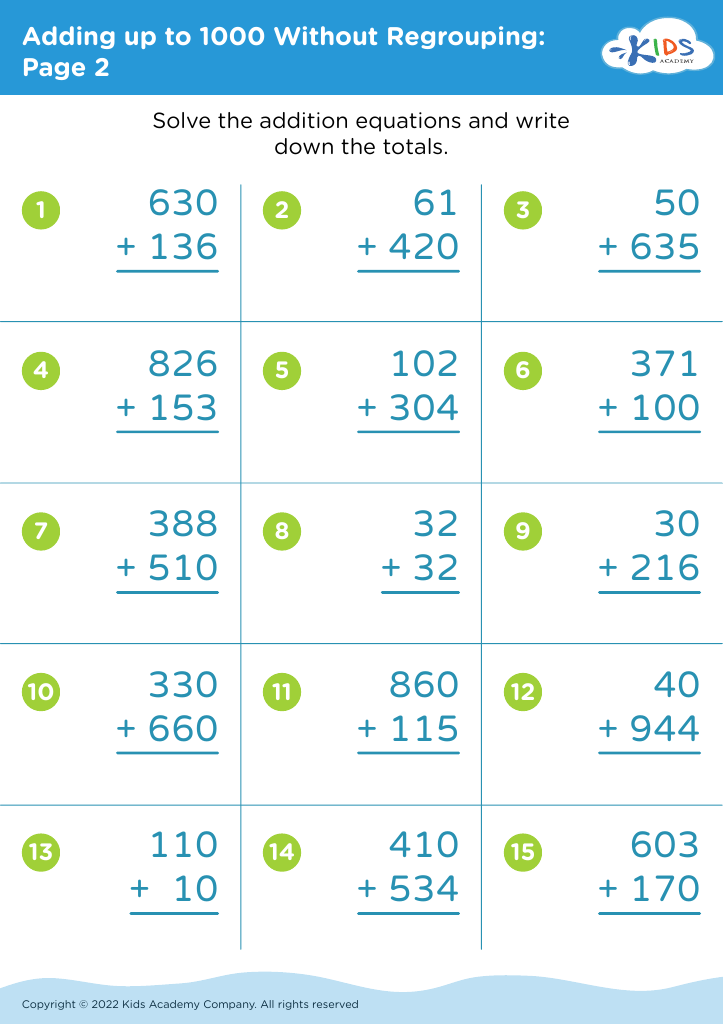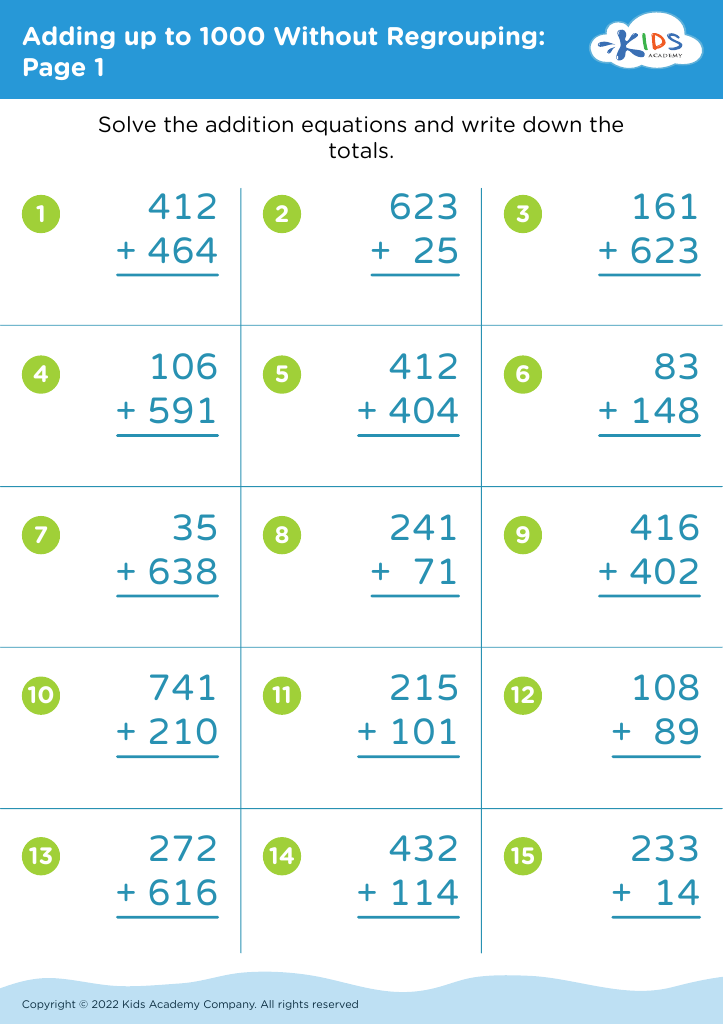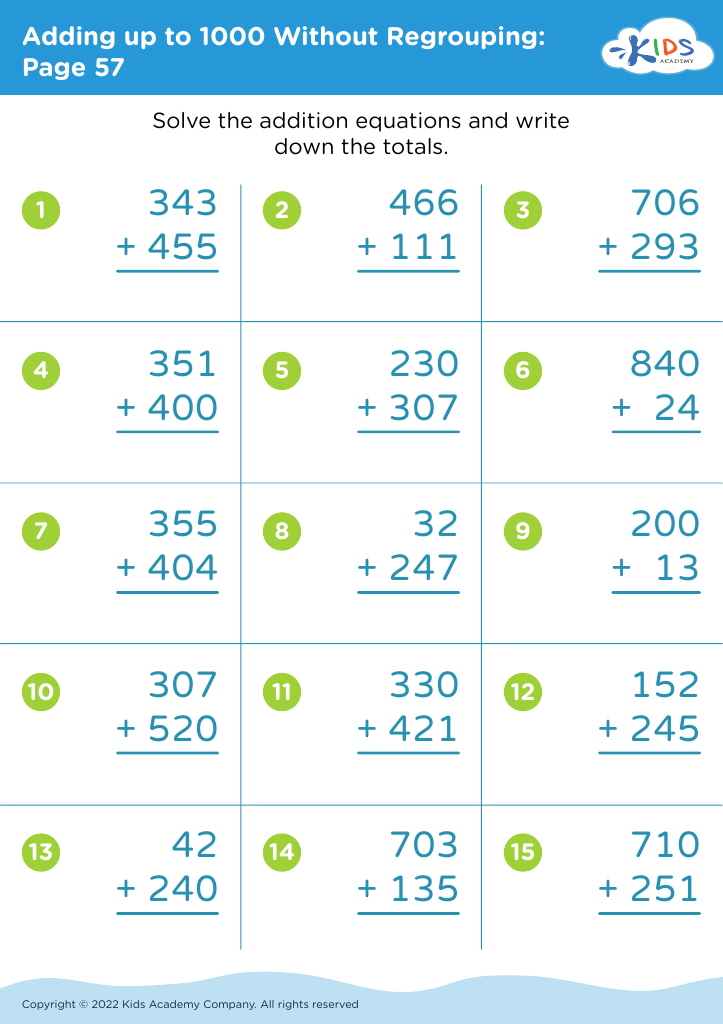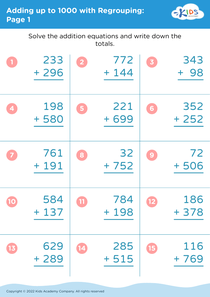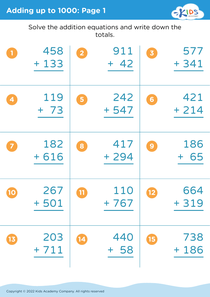Shape Recognition Adding up to 1000 Without Regrouping Worksheets for Ages 6-8
3 filtered results
-
From - To
Shape Recognition Adding up to 1000 Without Regrouping Worksheets for Ages 6-8
Discover a brilliant collection of worksheets tailored for young learners ages 6-8. These fun-filled printable activities focus on adding up to 1000 without regrouping, while also integrating essential shape recognition exercises. Perfectly designed to match your child’s pace and learning style, these worksheets ignite curiosity and foster a love for math. Watch as your child hones their arithmetic skills and geometric knowledge simultaneously. Grab these resources and turn learning into an engaging adventure! Explore today to elevate your child’s educational journey confidently and cheerfully.
Shape recognition and adding up to 1000 without regrouping are foundational skills that significantly benefit children aged 6-8. Parents and teachers should prioritize these concepts as they form the building blocks for more advanced mathematical understanding.
Shape recognition is important because it helps children understand key geometric concepts and relationships early on. Recognizing shapes enhances their spatial awareness and problem-solving skills, which are crucial in everyday life and various academic disciplines, including science and engineering. It also plays a role in visual literacy, helping children describe and interpret visual information efficiently.
Adding up to 1000 without regrouping develops numerical fluency and a solid understanding of basic addition operations. This task nurtures cognitive skills such as memory, logical thinking, and the ability to engage in multi-step problem-solving. Mastery of these skills ensures that children can handle more complex arithmetic in later grades with confidence.
Neglecting these skills can result in significant learning gaps, making future learning more challenging. Hence, fostering shape recognition and addition skills early on not only supports immediate academic success but also lays a strong foundation for higher-level math and everyday problem-solving abilities. This dual focus cultivates a well-rounded intellect, crucial for comprehensive intellectual and personal growth in children.

